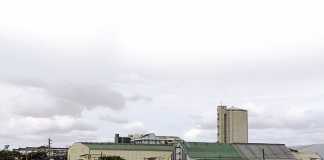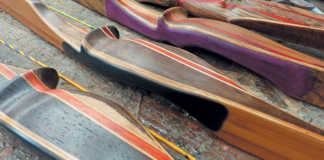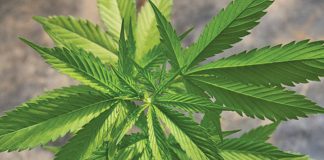The impact of the recent drought in the central and western regions of South Africa may be less harsh than expected, except in cases where producers have lost their entire crop to the drought. Current higher grain prices may to some extent alleviate the impact of a drop in volume on South Africa’s summer grain producers’ total income.
This is according to Wessel Lemmer, senior agricultural economist at Absa AgriBusiness. Lemmer adds that while farmers may experience cash flow restrictions following the drought, they have the capability to cut back on costs and manage cash flow constraints effectively. At the time of writing, the July 2015 futures contract price for white maize was R2 935/t and
for yellow maize R2 536/t.
A year ago, the comparative futures prices were R2 041/t and R2 062/t respectively. This difference means that while individual producers may suffer financially, grain producers in general should not be seriously affected. “In fact, irrigation grain producers and producers in the eastern parts of the summer grain region where it did rain stand to benefit from higher grain prices. Consumers, on the other hand will be affected by inflation increase because of the shortages in the market following the reduced 2015 grain harvest,” Lemmer explains.
At the end of May, the National Crop Estimates Committee estimated the size of the expected commercial maize crop at 9,84 million tons. The area estimated for maize remained unchanged at 2,65 million hectares, while the expected yield was 3,71t/ ha. The area planted to white maize was estimated at 1,45 million hectares and to yellow maize at 1,2 million hectares. The production forecast for white maize was 4,73 million tons, at a yield of 3,27t/ ha. The yellow maize production forecast was 5,11 million tons at an average yield of 4,24t/ha.
Average white maize consumption in South Africa for the past five years has been 5,2 million tons a year, while yellow maize consumption has amounted to 4,5 million tons a year, according to Petru Fourie, Grain SA research coordinator and production cost analyst. The 2015 sunflower harvest is estimated at 612 400t with a yield of 1, 06t/ha. The production forecast for soya beans is 942 850t (1,37t/ha), for groundnuts 66 725t (1,15t/ha) and for sorghum 125 400t (1,78t/ha).
Grain producers’ liquidity
Lemmer says the drought is not expected to noticeably affect the liquidity of grain producers in general. But individual producers may be cash-strapped as the drop in overall grain volume is relatively bigger than the price increase. Compared with a decade ago, South Africa’s grain producers’ debt-to-fixed-asset ratio has weakened from 39% in 2006 to 60% in 2014.
Debt-to-total-asset ratio, including machinery, implements and inputs, for the same period weakened from 20% to 32%. The implementation of advanced technology, coupled with precision farming practices and consequent increases in productivity, together with higher prices resulted in increased income levels in the past decade.
Lemmer expects commodity prices to trade sideways to lower over the long term, a stagnation that should result in a decline in income growth compared with the past decade. He recommends that producers focus on reducing their debt and increasing savings in order to become increasingly self-financed.
“Keep in mind that the weakening debt-to-asset ratio of 60% includes the increase in land values over the same period. The increase in this ratio may also have been due to producers integrating vertically in the supply chain,” he says. According to Lemmer, there is no general protocol for the manner in which commercial banks can assist drought-stricken producers to mitigate the effects of drought.
Producers are assisted individually according to their individual financial status. The insurance industry’s reluctance to provide crop insurance to grain producers, particularly in the more arid western regions of the country, will force producers both to diversify and to implement new technologies to mitigate risk. “Banks are nevertheless not in the business of selling out producers,” he says.
Maize imports
Lemmer stresses that the drought will not have a marked impact on either yellow or white maize imports this year because of sufficient stock levels. However, if the actual harvest for the 2015/16 marketing year is smaller than estimated and the prospects for new season plantings from October 2015 deteriorates and early deliveries for March and April is smaller than expected prices may enjoy additional support with the possibility of increased imports not to be excluded .
The 2014/2015 drought will affect maize exports to the rest of Africa. This may allow supplier countries such as Zambia access to new, deficit markets such as Zimbabwe and Namibia. This is because South Africa will in all likelihood not be able to export maize this year, tarnishing its reputation as a reliable exporter. New markets may therefore have to be developed.
“However, the good news is that good quality sun-dried maize such as ours will always be in demand by our traditional importers,” Lemmer explains. A survey by Grain SA has shown considerably lower than average dryland maize yields in the Free State, North West, Limpopo, Mpumalanga and KwaZulu-Natal.
Below-average soya bean, sunflower and groundnut yields were reported in the western Free State, KZN and North West. Soya bean yields in Mpumalanga fluctuated dramatically but the total provincial yield remained below average, while eastern Free State yield was average.
Severe drought also affected the livestock industry. There has been drought for nearly four years in the western parts of summer rainfall areas, according to Gerhard Schutte, Red Meat Producers’ Organisation (RPO) CEO. He says that livestock producers have had to cut their herds by as much as 10% in order to survive economically, as they can no longer afford to feed the animals, resulting in emergency slaughtering, increased supply and depressed producer prices.
Herd size
South Africa’s commercial red meat producers can be expected to scale down their herds even further in an effort to mitigate the effect of the drought. While commercial farmers had the wherewithal to survive and continue farming, the future was more bleak for emerging farmers.
“The more than one million households supported by emerging red meat producers stand to suffer the most from the prolonged drought, even if they receive government drought relief aid. These producers are usually cash-strapped and simply lack the financial reserves to feed animals for a protracted period,” Schutte says. An additional challenge is that considerably reduced 2015 grain crops mean higher animal feed prices.
“However, increased productivity in the industry resulted in the local production of beef increasing from 613 000t in 2012 to 698 000t in 2014, despite the drought. The mutton and lamb supply grew from 98 000t in 2012 to 101 000t in 2014. South Africa’s red meat producers should be lauded for increasing production even under these adverse conditions,” Schutte says.
He says that production could nevertheless shrink by as much as 5% during the 2016 season, should the drought continue. Red meat producers would therefore be well advised to put a proper winter grazing programme in place to ensure sufficient grazing until the start of the summer rain season.
Drought mitigation
Schutte urges landowners to implement as many veld fire precautions as possible. South Africa loses thousands of hectares’ grazing each year to fires, and producers simply cannot afford to lose what little grazing they have in this manner.
He also urges landowners to urgently remove invasive species such as Slangbos (Seriphium plumosum) which dramatically inhibit carrying capacity. He recommends that producers remove all non-productive stock from their land as soon as possible.
“Under these conditions, producers can’t afford to waste animal feed and grazing on poor performers. They must go.
I must add that the rains that did occur fell extremely sporadically, which means there are good spots of grazing in virtually all the provinces, which softens the effect of the drought somewhat,” he says.
George le Roux, Senwes animal production scientist, says that the severe drought conditions in the western regions of South Africa has put tremendous pressure on the farming community in terms of livestock management. Calculated decisions need to be taken with the help of experts to mitigate the risks faced due to shortages of quantity and quality feed to sustain livestock through winter.
Producers should ascertain the carrying capacity that can be sustainably maintained on their land during the drought, they should determine the grass species and veld ecotypes in each camp and, based on the camp sizes, determine how many days’ grazing are available in each camp.
“Camp rotation is vital and at least one-third of the grazing veld must rest for an entire growing season,” says Le Roux. “It’s essential that livestock producers compile a simple but effective fodder-flow programme to ensure a sufficient grazing supply for winter and periods of drought.”
Cull early
Unproductive animals should be culled, while special care must be taken of reproductive animals, especially first-calf heifers, to ensure optimum reproduction next season. Cows should be spared by weaning calves earlier and giving calves creep feed. One advantage of drought is that struggling cattle can be easily identified. Market these as soon as their condition improves, says Le Roux.
Producers must purchase feed timeously to prevent shortages and inflated prices during times of increased demand. Reduce competition for feed by dividing cattle into different groups, according to similar age, sex, size, condition, pregnancy and growth stages. Cattle should be fed every second day to reduce stress when there are no grazing or planted pastures available. Sufficient shade and clean water are crucial.
“Take stock of how much roughage, veld, hay, crop stover and silage are available,” advises Le Roux. “This will help to compile an accurate fodder flow. Limit the amount of whole grain (maize) feed to about 300g/ day to prevent bloating. Remember to gradually adapt livestock to maize by feeding them whole grain for two weeks before putting the animals on maize stover.
“Maintain the correct stocking rates for your climate and veld potential. Rest any one camp or group of camps for a full growing season, even in times of drought. Record the number of livestock and number of grazing days in a camp. Stick to the total amount of predetermined grazing days available per camp. This will go a long way to see your livestock herds
through a drought,” Le Roux concludes.












